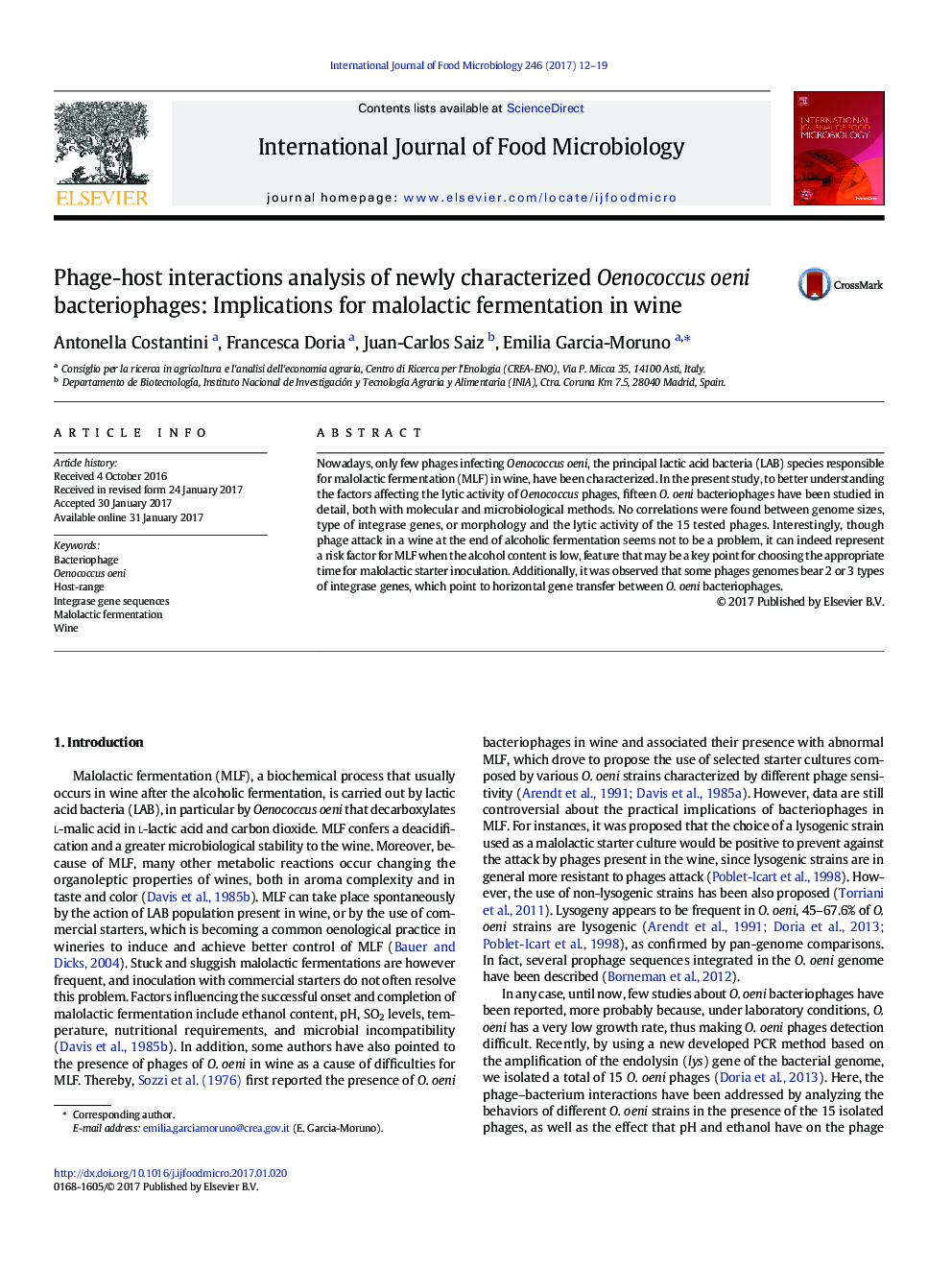| Article ID | Journal | Published Year | Pages | File Type |
|---|---|---|---|---|
| 5740851 | International Journal of Food Microbiology | 2017 | 8 Pages |
â¢The lytic activity of the O. oeni phages does not correlate with their genome sizes, type of integrase genes, or morphology.â¢pH and ethanol affect the lytic activity of Oenococcus phagesâ¢Phages can represent a risk factor for MLF when the wine alcohol content is lowâ¢Testing bacterial commercial starter for phage resistance may help to proper MLFâ¢Phages genomes may contain 2 or 3 types of integrase genes, which point to horizontal gene transfer between O. oeni phages.
Nowadays, only few phages infecting Oenococcus oeni, the principal lactic acid bacteria (LAB) species responsible for malolactic fermentation (MLF) in wine, have been characterized. In the present study, to better understanding the factors affecting the lytic activity of Oenococcus phages, fifteen O. oeni bacteriophages have been studied in detail, both with molecular and microbiological methods. No correlations were found between genome sizes, type of integrase genes, or morphology and the lytic activity of the 15 tested phages. Interestingly, though phage attack in a wine at the end of alcoholic fermentation seems not to be a problem, it can indeed represent a risk factor for MLF when the alcohol content is low, feature that may be a key point for choosing the appropriate time for malolactic starter inoculation. Additionally, it was observed that some phages genomes bear 2 or 3 types of integrase genes, which point to horizontal gene transfer between O. oeni bacteriophages.
